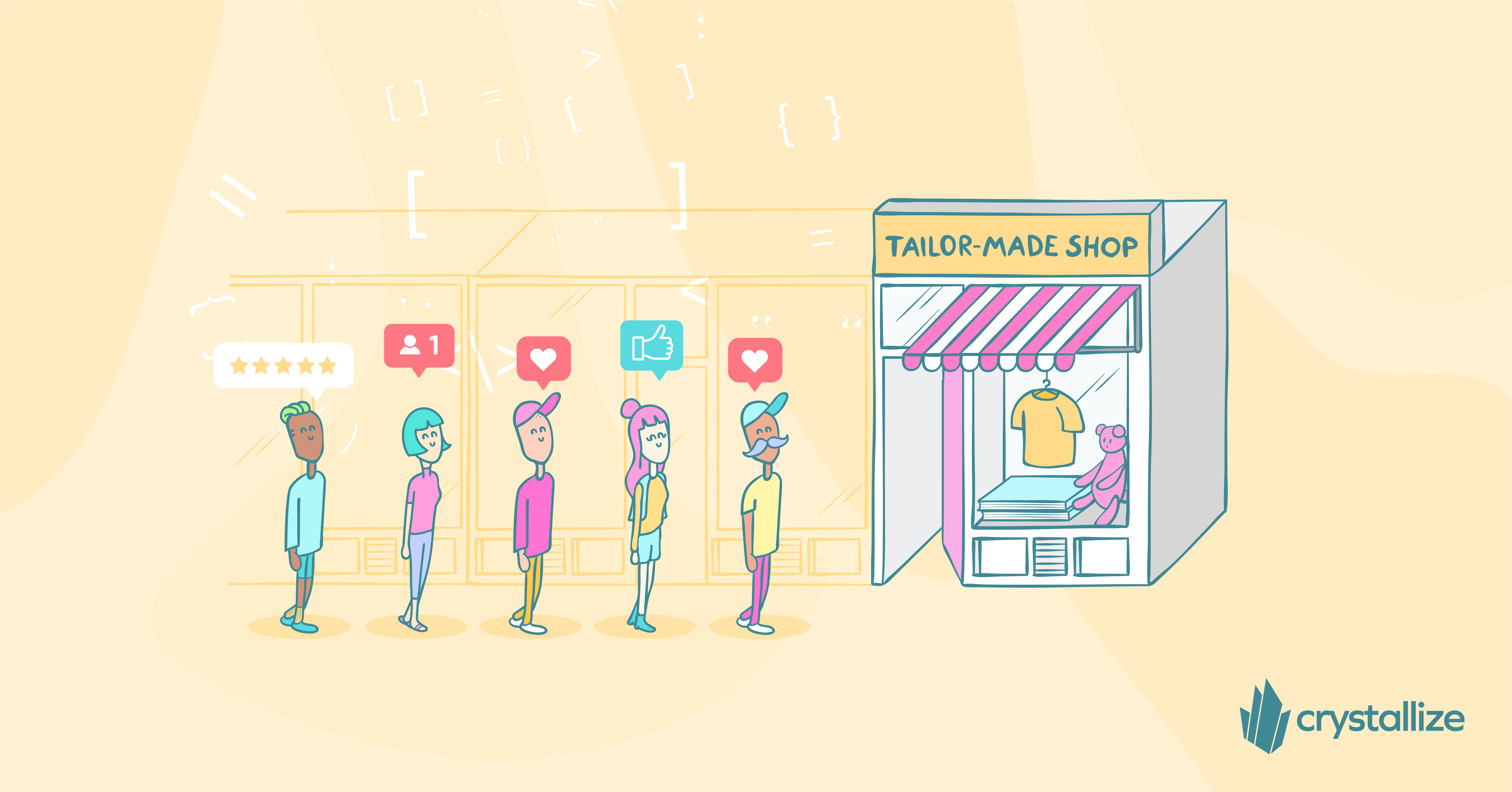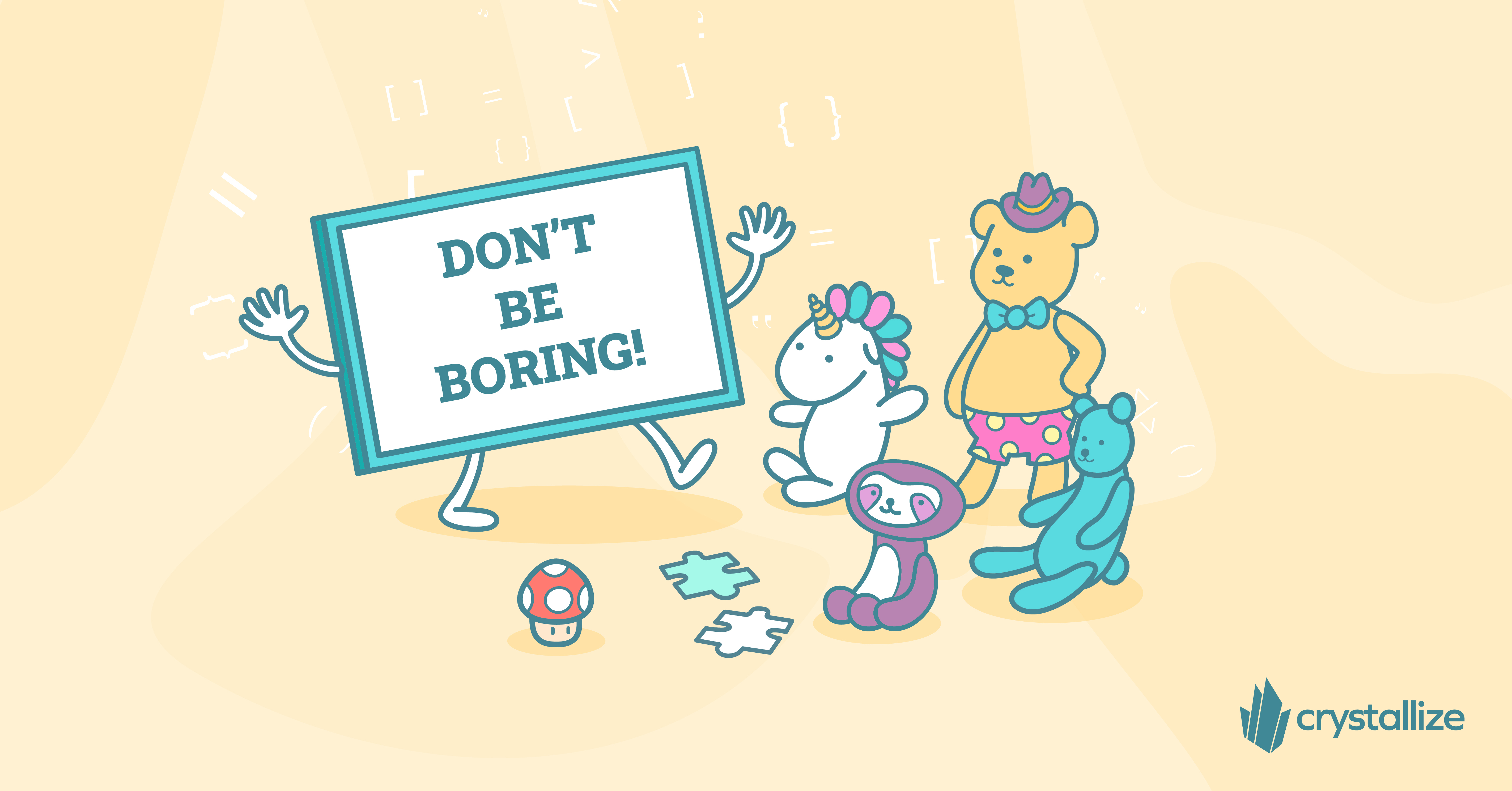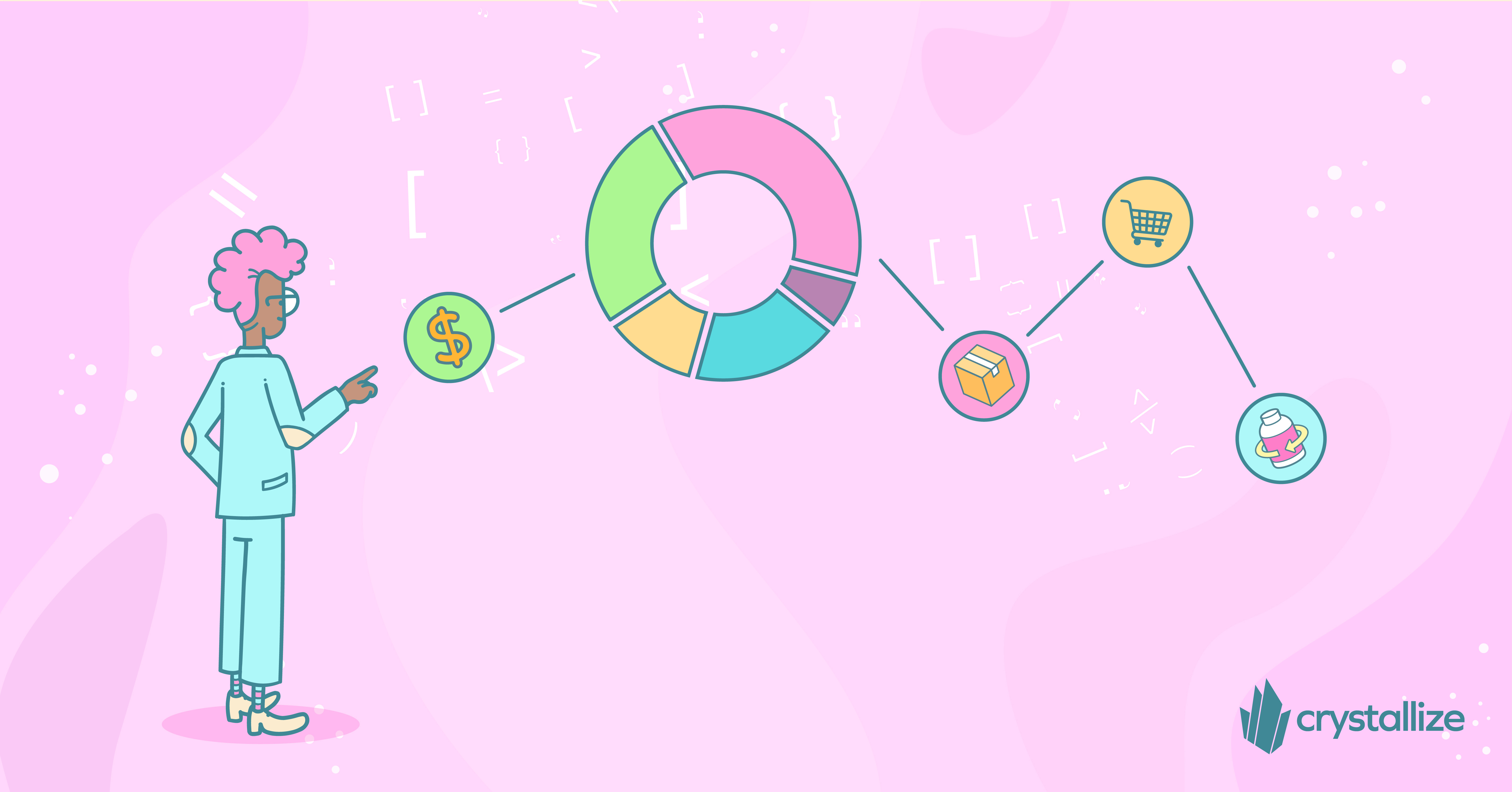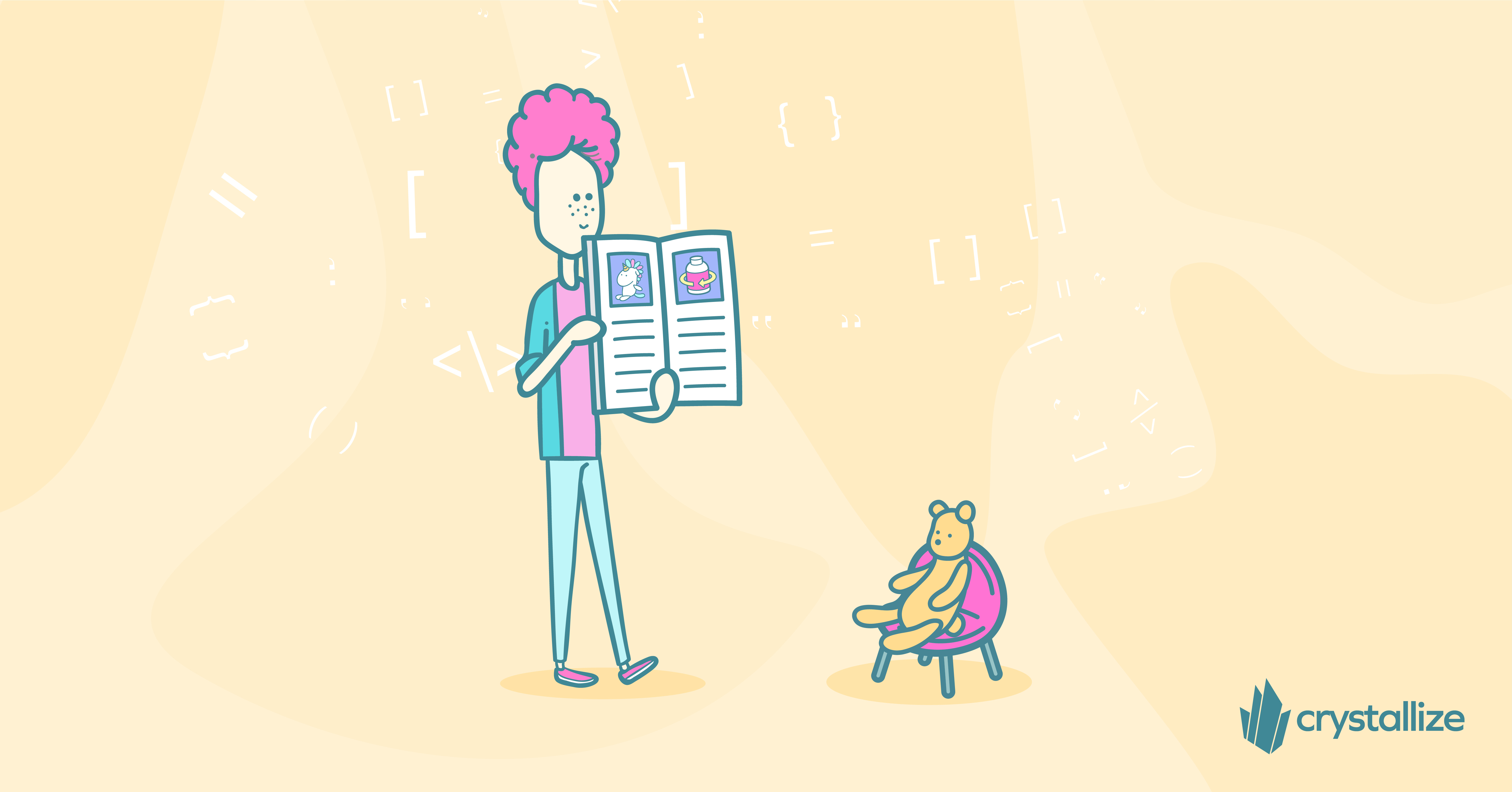How to Turn Shoppers into Brand Loyalists?
Turning shoppers into loyalists is all about building genuine connections, delivering kick-ass quality, and standing out in a way that resonates with them. Easier said than done, right?

In the ever-growing world of eCommerce, where consumers have endless choices, brands rule the world. Brands rule shopping habits. Brands rule shoppers' expectations. Well, we might not be there yet, but we’re pretty damn close, and that’s what makes building brand loyalty more important than ever.
It’s what can set you apart from competitors and ensure a constant stream of revenue.
And the industry realizes this. For example, 50% of marketers list brand loyalty as one of the top goals of their content marketing strategies.
How can you win the hearts and minds of customers so that they return to your business repeatedly? Why do people go from casually browsing for a product to fiercely advocating for a specific brand? How did the brand win them over?
A couple of months back, I talked about it with Bård Farstad, our CEO, and Ståle Eikeri, our sales guy and COO, and what you read are my notes turned into an article. It’s not like we share the best-kept secrets of turning shoppers into brand loyalists, it’s more like we share our experience and what worked for us.
Build a Strong Brand Identity
First, no flashy marketing will matter if your product is a dud. Second, Don't Be Boring! Both said these two instantly at the beginning of our conversation. If you are just entering the business arena, besides the quality of your product/service, ensure your brand has some personality.
Let’s break what Don’t Be Boring! means.
Competitive Analysis and Market Positioning
It might be counterintuitive and hard to think about when you have that great idea already, but ... understanding where your product/service/brand might stand in comparison to competitors and identifying unique value propositions beforehand is crucial for developing a loyalty strategy that differentiates your brand in a crowded marketplace.
Get Clear with Your Brand's Personality or Brand Voice
Think about what makes your brand unique and what kind of personality it has. Look at your business goals and values, and decide on an aligned brand voice.
How would you like your customers to perceive you? What emotions do you want to evoke? What language and tone are you currently using in your marketing materials, and is it working?
Are you serious and professional or fun and playful? If your business is a law firm, you’d probably want your brand to sound serious and professional. Now, if it’s children’s toys, you’d definitely go the fun and playful route.
Talk to your shoppers, not at them. Don't just bombard them with sales pitches; engage with them. Listen to their feedback. It's like any good relationship; it's a two-way street.
Whichever voice you come to, just make sure you use it consistently across different channels. It’s how your customers will remember you.
Choose a Memorable Name and Logo
Yeah, easier said than done. Two of your brand identity's most essential visual elements are your name and logo.
When choosing a name, consider its memorability, catchiness, and relevance to your products/services. Your name should be easy to remember, pronounce, and spell so that people can find you easily online.
Furthermore, it’s recommended that you avoid a name that already exists. This is because a company with a similar name (even if another industry) likely already ranks on Google for branded terms, and your brand may be hard to come by. Choose the path of least resistance!
Similarly, when designing your logo, make sure it is visually appealing, simple, and representative of your brand's personality. Your logo should be easy to recognize and remember and convey your brand's values and personality through its design elements, such as color, shape, and typography.
Be Consistent
Consistency is key when it comes to building a strong brand identity. It’s a sentence we’re sure you’ve read thousands of times, but it’s true.
Ensure all your branding efforts are consistent and your messaging and visual identity are the same across all platforms.
This will ensure your customers recognize you wherever they see you, making it much easier to build brand loyalty.
Measure, Evaluate, Repeat
Remember to track and analyze the impact of your branding efforts continuously. Utilizing data analytics tools to monitor customer behavior, engagement levels, and conversion rates can provide valuable insights for refining these strategies.
But Be Careful
While establishing a brand's personality is crucial, there's a risk of overemphasizing this at the expense of focusing on product functionality and user experience. The functionality and usability of your website and products are as important as the brand's personality.
Provide Exceptional Customer Experience
According to Microsoft, 56% of global consumers say customer service is very important in brand choice and loyalty. I would argue that the numbers increase when SaaS businesses are in question.
86% of consumers would give up on a brand after as few as two poor experiences. Offering multiple channels for customers to reach out for support, such as email, phone, community, and live chat, is a definite must, as well as providing a fast response time, personalized interactions, and easily accessible information.
However, the customer experience is broader than just service interactions. It encompasses the entire journey from browsing to purchasing and post-purchase support. Enhancing the website's user interface, simplifying the checkout process, and providing personalized product recommendations can significantly impact customer loyalty.
All of this helps customers feel valued, make them trust in your business, and have them come back.
Create a Community Around Your Brand
Building a solid online business should be your goal, but not the only one: another goal should be to create a long-term relationship with your customers. An important aspect of this is building an online community around your brand. Thankfully, many options are available, i.e., run a website forum or community on Slack (like we do) or Discord.
It should encourage customer engagement and feedback, and it may host events or even organize various workshops. Ultimately, it should create a sense of belonging in this brand community for your customers.
You can do this by making sure you're engaging with your community regularly, responding to their feedback, and, as we previously mentioned, providing exceptional customer service.
But… successful community building requires consistent and authentic engagement, resource allocation for moderation and content creation, and a deep understanding of your audience. The complexity and commitment required to build and maintain an active online community should not be underestimated.
Stay True to Your Brand Values and Mission
Did you know that 64% of consumers say that sharing the same values with a brand is the primary reason they have a relationship in the first place?
Your brand values define your company's purpose, beliefs, and goals. Be authentic; clearly communicate your brand’s philosophy or higher purpose!
Don’t be afraid to connect with your customers on a level that’s not superficial. The connections you make will be that much stronger.
Develop a Loyal Customer Base Through Rewards and Loyalty Programs
Retail, fashion, and big brands generally do this a lot. Show your customers you value them and increase loyalty through a rewards and loyalty program.
An excellent place to start is to identify the rewards most valuable to your customers. This could include discounts, free products, exclusive content, or early access to sales.
Take your time and plan it strategically: create a devoted customer base that will likely buy from you again and recommend your business to others by creating a sense of exclusivity and offering actual benefits.
SaaS businesses might find this hard to implement. Still, you can always reward customers with simple tokens of appreciation no matter the business.
Still be vary as the costs associated with rewards programs can be significant.
Benefits of Turning Shoppers into Brand Loyalists
Turning shoppers into brand loyalists offers a multitude of benefits for businesses, especially in the competitive landscape of eCommerce. Here are some key advantages.

Increased Brand Recognition and Reputation
When it comes to online reviews, social media posts, or word-of-mouth recommendations, loyal customers are more likely to actively advocate the brand to their friends, loved ones, and even strangers.
This free promotion can significantly increase your brand's reach, exposure, and reputation.
With the jungle that eCommerce today is in, your reputation can do wonders for you.
Higher Customer Retention and Repeat Business
Loyal customers spend more money and make more frequent purchases than new customers who are somewhat unfamiliar with the brand and its products.
In fact, customer retention is 5- 25x cheaper than new customer acquisition.
This provides a sustainable source of revenue for businesses, helping increase profits over time.
Increased Customer Referrals and Word-of-mouth Marketing
Repeat after us: Never underestimate the power of word-of-mouth marketing.
Always remember that loyal customers are more likely to recommend their favorite brands to friends and family. 88% of people had the highest level of trust in a brand when a friend or family member recommended it, and 78% of people talked about their favorite recent experiences to people they know at least once weekly.
They’re the unofficial brand ambassadors who have a deeper emotional connection with the brand! Over time, this can lead to new customer acquisition and further growth.
Higher Average Order Value (AOV)
Brand loyalists often have a higher average order value compared to one-time buyers. Their trust in the brand and familiarity with the products lead them to make more substantial purchases over time.
Improved Customer Lifetime Value (CLV)
Customer lifetime value (CLV) is one of the main KPIs in marketing, and a high CLV means each customer will bring in more revenue for your business.
As a brand loyalist brings in more revenue and becomes a more valuable customer, your business can afford to spend more on new customer acquisition while retaining the existing ones.
Valuable Feedback and Insights
This one is easily forgotten to be mentioned or not mentioned at all, but we at Crystallize know the value of feedback all too well. Loyal customers are more engaged and often provide more feedback about products and services. This information can be crucial for businesses in refining their offerings, addressing issues, and innovating new solutions.
Final Thoughts
Turning brand consumers into brand loyalists can seem time-consuming and challenging, but it’s one of the smartest moves you can make in the long run. Ads are getting expensive by the day. While still significant, search traffic is bound to change with the rise of AI and AI experience in search results. Social media, well, social is still an open arena where luck plays a considerable part in a business's success.
It is no wonder why more and more eCommerce businesses focus on customer retention rather than just customer acquisition.
Remember: prioritize customer engagement and personalized experiences, and stay true to your brand values. Then ensure your customer can easily see that, and you’ll be good to go!
As I already said, it’s easy, right?
You Might Wanna Check These As Well👇

The Ultimate Guide to eCommerce Business Models (B2B, B2C, DTC & More)
Explore the different eCommerce business models—B2B, B2C, DTC, B2G, and more. Learn how to choose the right model for your online business and scale with modern strategies.

Product Storytelling in the World of Headless Commerce
At its core, product storytelling is the art of weaving a compelling narrative around a product or service. Instead of just listing features or benefits, you're engaging customers on a deeper, emotional level, offering them a story they can connect with.

Subscription eCommerce: The Ultimate Guide
Subscription ecommerce business models have seen fantastic growth in recent years. With Crystallize being at the forefront of it, now is the time to dive into the ins and outs of starting, running, and scaling an eCommerce subscription business.
